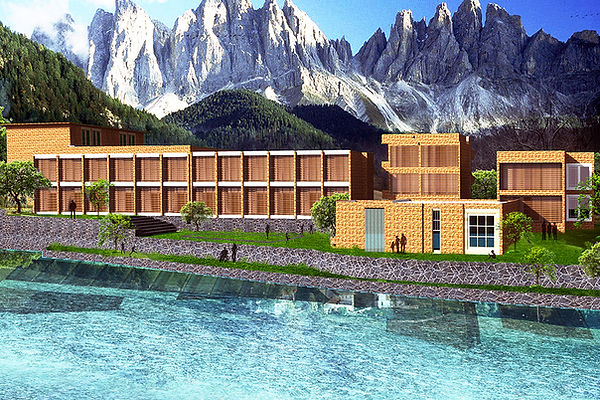Houses | South City Residence
The issue of privacy and independence was tackled with a different approach to the modern Indian family; two identical houses were designed which were joined together through balconies and a common compound area.
6450 SF
2019
Traditionally, the Indian family system has been associated with that of a joint family; in recent times, that has changed with each unit that is a part of the joint setup developing a specific requirement of space and privacy. The client brief necessitated a house for two brothers, on two adjoining plots.
The problem was tackled with a different approach to the modern Indian family; two identical houses were designed which were joined together through balconies and a common compound area. This gave the two brothers independent houses to project their vision and maintain a connection between both spaces at the same time. With a unified facade, the two houses end up looking one. Open spaces and connection with nature has been incorporated at varied levels with two gardens in the front and back of the house. A take on modern Indian joint family living space, Twin house sets a precedent for Indian homes today.
Houses | South City Residence
Retail & Hospitality | USI, Rohini

Houses |Ridge House
Houses | Malana Housing
Situated on a remote plateau by the side of the torrential Malana river, at a height of almost 10,000ft, Malana is a solitary village in the Parvati Valley, to the north-east of Kullu Valley and largely isolated from the rest of the world. The high mountainous terrain in the region is home to several hydroelectric power plants, feeding the growing Indian economy. The project brief was to create a suitable environment for staff housing while fostering a sense of community.
24500 SF
The central concept of the design was to allow for all houses to get a deeper view than simply looking across the river and to have a large central gathering area which could be used in the evenings and during festivities. This was achieved by angling the orientation of the buildings, allowing them to look into the valleys and catch the much-needed sunlight. These were organized around a hardscaped garden that stepped down the bank, allowing the people to approach the river. A large community space with recreational facilities was placed at the other end of the garden. The various apartment sizes are combined into 2 story walk-up blocks that form the periphery of the garden.
Building in remote and ecologically fragile areas requires culturally sensitive solutions to sustainability. The vernacular architecture of the region uses a hybrid system of wood beams and stone to create extremely robust walls and the temple to the principal deity of the region, known as Jamlu Devta, best expresses this principle. The façade of the blocks was proportioned to match the spacing of the wood beams, used a screening device for the sun balconies facing the river. The blocks were designed as loadbearing structures with parallel brick walls supporting single-span roofs.



